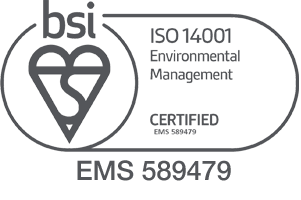


14/03/2022
How can an efficient triage system help you to minimise suffering and maximise survivability in an emergency?
In a Multiple Casualty Incident (MCI) it is highly likely that there will be more casualties than initial resources on scene.
A triage system enables first responders and medical staff to carry out rapid assessments of casualties, to determine critical logistical information. This will be required to ensure we have the appropriate resources to manage the incident correctly.
It will include;
- The number and severity of casualties involved.
- The available resources required on scene and the wider medical community.
Acknowledging that, in many circumstances our casualties will present a complex spectrum of care requirements.
Triage will assist us when making the following life-saving decisions;
- Who are the casualties that will need time critical definitive care and we can do little for on scene? Therefore needing rapid evacuation to definitive care.
- Are there casualties that have endangering conditions where we can apply interventions and treatment that may stabilise them and allow protracted safe time to reach definitive care.
- Who are the casualties who have significant injuries but are stable enough to not need time-critical evacuation?
- Which casualties have minor injuries and require minimal intervention?
A correctly implemented triage system will allow us to quickly identify how many people fit into the above groups and then apply a logistical plan to ensure those who need time critical care are recognised and resourced appropriately. If this logistical plan is implemented correctly it will significantly increase the chances of maximising survival, as the right casualty will arrive at the right place of care in the right time.
What makes a triage system work?
For triage to work in a highly charged environment of an MCI, several concepts need to be addressed in preparation of application. Below are some of the key areas that need to be considered.
Competent individuals
No system will be effective unless the people using it have training and testing to ensure they will provide an effective response. Appropriate skills for operators working at different areas of the scene should be recognised and a training programme put in place to ensure the correct skills turn up with the correct people.
Equipment available when required.
As noted throughout this document, effective time management is critical to our aim of maximising survival and minimising suffering. The right equipment in the right quantity must turn up as soon as possible. If we have to wait for equipment to effectively triage then time is wasted.
Equipment must be embedded so that it is appropriate to the role required. Examples of this includes many ambulances worldwide carry equipment for initial triage and rapid life-saving interventions on each front line responding vehicle within SmartTriage™ Tri Pac. Military models where soldiers each carry a Smart Tag and first managers on scene each deploying a SmartTriage™ Commanders.
Equipment that works under duress
MCI scenes are not easy places to work in. Any scene that has injured multiple people will have its complexities. Equipment deployed must be able to work with staff who are under considerable pressure and also the physical characteristics of the actual incident. Incidents often happen in darkness, so addressing how it will perform in the dark is key.
Accurate communications
Communications is often cited as the area that fails most during incident response. It's a subject in itself to fully understand why this happens and how it can be rectified. At a basic level we need to move critical information accurately to the right decision makers in a timely manner. If this information becomes corrupted, is lost, or decisions are not made upon it, it will have a significant effect on the efficiency of our response.
Summary
There are many areas that affect the overall outcome of a response to multiple casualties, this paper has highlighted critical areas that should always be considered, assessed and tested within planning and implementation phases.
How can we help
At TSG Associates LLP, we offer a range of triage products that ensure a systematic approach to managing casualties. Our products are designed specifically for different sectors and environments to avoid confusion and support efficient triage: For example, our SmartTriage™ Tri Pack provides a first response vehicle with primary triage equipment and space for rapid lifesaving equipment. London Ambulance uses this system extensively.
We recognise the importance of triage training for professionals to manage and deliver effective triage. Our SmartTriage™ Industry education supports both managers and first responders in civilian multiple casualty incidents with the provision of micro video teaching and practical exercises to personalise the information to your specific requirements.
Contact us
To find out more about our triage and incident management solutions, please get in touch with TSG Associates on 01422 557299.


%202.png)






